1
Draft Design2
Input Quantity3
Pay After Approval⏱ 3 Min Read - Coastal Reign Team - Nov 4, 2024
T-shirt printing is a widely embraced method for creating custom designs on garments, catering to a diverse range of personal and business needs. The t-shirt printing industry has evolved into a dynamic market, offering a variety of printing techniques that entrepreneurs can leverage to meet their specific requirements. With each printing method bringing its own unique characteristics, advantages, and disadvantages, it’s essential to thoroughly understand the different types available to select the best one for your project. One popular, beginner-friendly method is heat press printing, which uses heat transfer to apply designs.
Whether you’re aiming for vibrant colours that grab attention, intricate details that showcase your design skills, or cost-effective solutions for bulk orders, the right printing technique can make all the difference in achieving the desired outcome. For instance, some methods are ideal for high-volume production and offer durability, while others excel in capturing fine details or providing a softer feel. Additionally, the choice of fabric can influence which printing method will yield the best results. Heat transfer vinyl is particularly suitable for small job orders and customizing designs.
By familiarizing yourself with these various printing methods, you can make informed decisions that align with your design goals and business needs. This knowledge not only enhances the quality of your final product but also streamlines your production process, ensuring that your t-shirt designs stand out in a competitive market. Ultimately, understanding the nuances of t-shirt printing empowers you to create stunning, custom apparel that resonates with your target audience and elevates your brand.
T-Shirt Printing Methods
There are several t-shirt printing types, each with its unique characteristics, advantages, and disadvantages. Here are some of the most common t-shirt printing methods:
Screen printing remains the most popular printing method for custom t-shirts, and for good reason! It delivers vibrant, long-lasting colours that withstand frequent wear and washing. Ideal for bulk orders, screen printing is cost-effective, especially for simple designs with limited colours. Screen printing works best on cotton and other natural fabrics, making it a top choice for promotional tees, team uniforms, and event merchandise. With its durability and high-quality finish, screen printing is the go-to option for anyone looking to create bold, professional t-shirts that stand the test of time.
The screen printing process works by pushing ink through a screen onto the fabric. The process begins with creating a stencil of the design on the screen, blocking off areas where ink shouldn’t pass through. Each colour in the design requires a separate screen, so multi-coloured prints involve multiple layers. Once the screen is ready, the t-shirt is placed on a printing press, and ink is applied across the screen using a squeegee. As the squeegee moves, the ink passes through the open parts of the stencil, transferring the design onto the shirt. After printing, the t-shirts are cured with heat to ensure the ink sets, creating a durable and long-lasting finish.
Pros of Screen Printing:
Cons of Screen Printing:
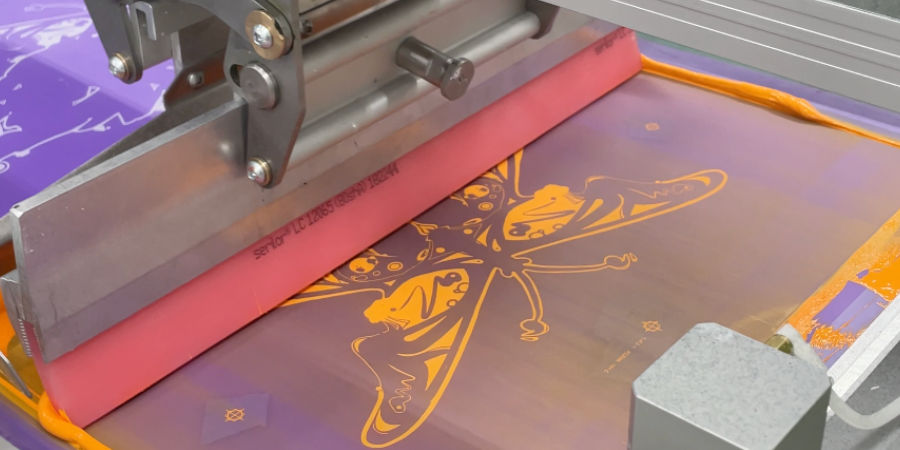
Direct Film Transfer also known as Direct to Film Printing
Heat transfer printing, particularly through Direct to Film (DTF) printing, is an innovative digital printing method that effectively transfers designs onto t-shirts using a heat press technique. This process has gained popularity for its ability to produce high-quality prints, making it an excellent choice for those looking to create custom apparel. DTF printing is particularly well-suited for small to medium-sized orders, allowing businesses to cater to specific demands without the overhead associated with larger production runs.
One of the key advantages of DTF printing is its versatility in terms of fabric compatibility. It works effectively on a variety of materials, including cotton, polyester, and blended fabrics, providing a wide range of options for different styles and preferences. This adaptability makes it an attractive option for businesses that offer a diverse array of products or for individual creators looking to personalize garments.
The DTF process begins with printing the desired design onto specialized film paper. Once the design is printed, a heat press is used to transfer the image onto the t-shirt. This method not only allows for vibrant colours but also captures intricate details that might be challenging to achieve with other printing techniques. The result is a sharp, high-resolution print that stands out.
In addition to its aesthetic benefits, DTF printing also offers durability. The heat transfer method ensures that the prints adhere securely to the fabric, allowing them to withstand regular washing and wear without fading or peeling. This longevity enhances the value of the garments, making them a reliable choice for both consumers and businesses.
Overall, Direct to Film printing is a highly effective method for producing custom t-shirts that boast vibrant, durable prints with intricate details. Its flexibility, efficiency, and high-quality output make it a popular choice for anyone looking to create standout apparel, whether for promotional events, team uniforms, or personal use.
Pros of Direct Film Transfer:
Cons of Direct Film Transfer:
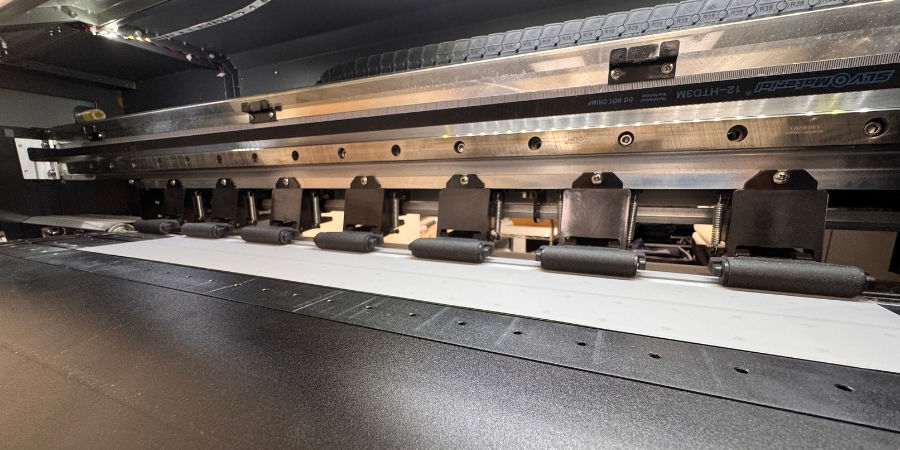
Direct-to-Garment (DTG) Printing
Direct-to-garment (DTG) printing, once popular for custom apparel, is becoming less common as more people shift to direct film transfer (DTF) printing. A crucial aspect of DTG printing is the t-shirt design, which is generated digitally to ensure high-quality prints. DTG, which prints directly onto fabric, can be limiting in terms of fabric types, colour vibrancy, and durability. In contrast, DTF offers more versatility, working on a wider range of fabrics with vibrant, long-lasting results. It’s also faster and more cost-effective for detailed designs. As DTF continues to rise in popularity for its efficiency and high-quality finish, many are moving away from DTG in favour of this newer, more reliable method.
Pros of Direct-to-garment:
Cons of Direct-to-garment:
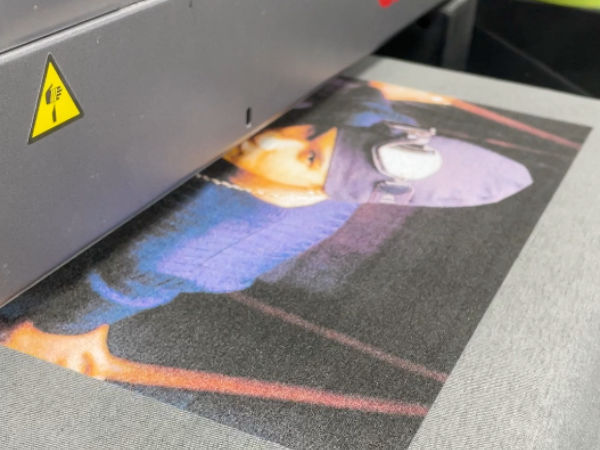
Vinyl Printing
Vinyl printing has long been recognized for its ability to produce vibrant colours and clean designs on custom apparel. However, in recent years, its popularity has declined significantly within the industry. While it can still be effective for certain applications, vinyl printing often faces limitations that make it less appealing compared to newer techniques.
One of the main drawbacks of vinyl printing is its durability. While vinyl can initially look great, it may not hold up well after multiple washes, leading to issues like cracking or peeling. This can be particularly problematic for garments that are frequently worn, as the longevity of the print is a key consideration for both brands and consumers.
Additionally, vinyl prints can have a less flexible feel on the garment, which may not provide the comfort that many customers seek in custom apparel. As consumers increasingly demand softer, more breathable fabrics with high-quality prints, many brands are turning to more versatile and efficient printing methods like Direct to Film (DTF) printing. These newer technologies offer superior durability and a more comfortable finish, making them a better fit for today’s market.
As the industry evolves, it's essential for businesses to stay updated on the latest printing techniques that meet the growing demands of quality and performance. While vinyl printing still has its place, it’s clear that brands are moving towards options that offer enhanced results and longer-lasting designs.
Pros of Vinyl Printing
Cons of vinyl printing

Embroidery
Embroidery is a popular choice for custom apparel because it offers a vibrant, textured, and professional look that lasts. However, when it comes to thin, lightweight t-shirts, embroidery may not be the best option. The intricate stitching can be too heavy for thinner fabrics, causing the material to pucker or feel stiff. On short-sleeve t-shirts with light fabric, the embroidered design might not sit as comfortably or look as smooth as it would on thicker materials.
For the best results, embroidery shines on heavier fabrics like polo shirts, sweatshirts, or heavyweight t-shirts. These materials provide the necessary support for the stitching, ensuring the design looks clean and the garment remains comfortable to wear. When applied to the right fabric, embroidery offers a polished, professional finish that adds a premium touch to your custom apparel, making logos, names, or designs stand out with lasting durability.
Pros of embroidery:
Cons of embroidery:
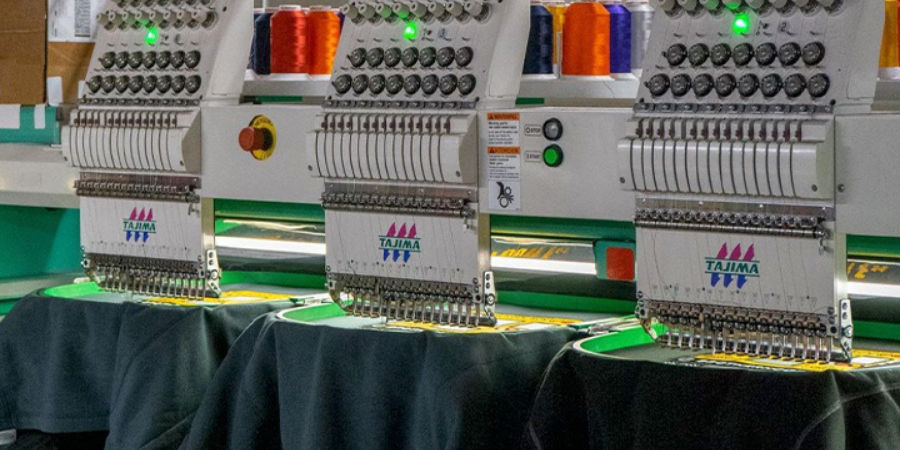
Dye Sublimation printing
Sublimation printing is ideal for creating vibrant, durable designs on jerseys, athletic wear, and all-over prints. This method uses heat and transfer paper to transfer dye directly into the fabric, ensuring that the design becomes part of the material rather than sitting on top of it. As a result, sublimation prints are lightweight, breathable, and long-lasting, making them perfect for polyester and moisture-wicking fabrics commonly used in sports uniforms. The colours remain vivid even after repeated washing, and the design won’t fade, crack, or peel.
One of the major advantages of dye sublimation printing is its ability to produce seamless, edge-to-edge prints, allowing for bold, all-over designs that cover the entire garment. It’s also highly customizable, making it easy to personalize each piece with unique names, numbers, or logos without extra setup costs. Whether you’re looking to outfit a sports team or create custom apparel with striking graphics, sublimation offers exceptional quality and versatility.
Pros of dye sublimation printing:
Cons of dye sublimation printing:
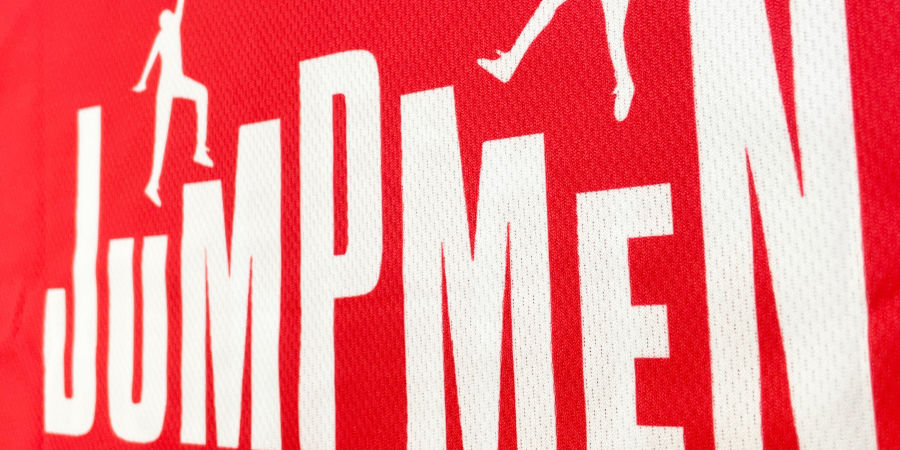
In summary, choosing the right t-shirt printing method depends on your specific needs, including design complexity, fabric type, and order quantity. Screen printing is ideal for vibrant, bulk orders, while Direct Film Transfer offers versatility for smaller runs with intricate details. Direct-to-garment is perfect for detailed custom designs, although it works best on cotton. Embroidery provides a professional touch for heavier fabrics, and dye sublimation excels in creating vibrant, all-over prints for polyester materials. By understanding the pros and cons of each method, you can make an informed decision that best suits your project, ensuring your custom t-shirts look great and last long.